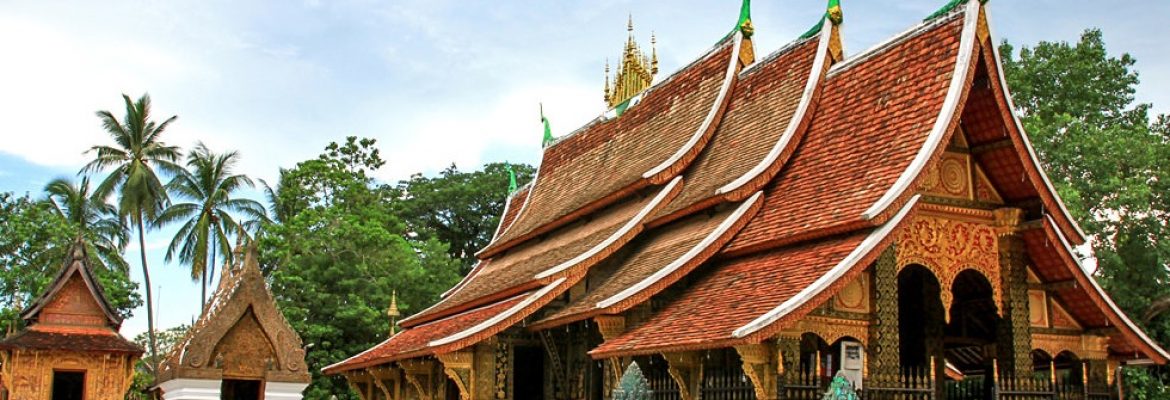Luang Prabang, Laos
Luang Prabang is an outstanding example of the fusion of traditional architecture and Lao urban structures with those built by the European colonial authorities in the 19th and 20th centuries. Its unique, remarkably well-preserved townscape illustrates a key stage in the blending of these two distinct cultural traditions.
Wat Xieng Thong
Luang Prabang’s best-known monastery is centred on a 1560 sǐm (ordination hall). Its roofs sweep low to the ground and there’s a stunning ‘tree of life’ mosaic set on its western exterior wall. Close by are several stupas and three compact little chapel halls called hŏr. Hŏr Ɖąi, shaped like a tall tomb, now houses a standing buddha. The Hŏr Ɖąi Pha Sai-nyàat, dubbed La Chapelle Rouge – Red Chapel – by the French, contains a rare reclining buddha. Fronted in lavish gilt work, the Hóhng Kép Mîen stores a ceremonial carriage, festooned with red-tongued nagas (river serpents) designed to carry the golden funeral urns of the Lao royalty.
Royal Palace
Evoking traditional Lao and French beaux-arts styles, the former Royal Palace was built in 1904 and was home to King Sisavang Vong (r 1905–59), whose statue stands outside. Within are tasteful, decidedly sober residential quarters, with some rooms preserved much as they were when the king was captured by the Pathet Lao in 1975. Separate outbuildings display the Floating Buddha photography exhibition of meditating monks and the five-piece Royal Palace Car Collection.
No single treasure in Laos is more historically resonant than the Pha Bang, an 83cm-tall gold-alloy buddha. To find it, walk east along the palace’s exterior southern terrace and peep in between the bars at the eastern end. In the southeast corner of the palace gardens, Wat Ho Pha Bang was built to house the Pha Bang buddha. Inside the museum, footwear and photography are not permitted and you must leave bags in a locker room to the left-hand side of the main entrance.
Mount. Phousi
One of the most visited sacred sites in Luang Prabang is located at the top of Phu Si. Having climbed myriad steps leading to it, you’ll be rewarded with the best view of the city and Mekong River from here. Built in 1804, by night the temple gleams like a chandelier. It’s best visited at dawn or sunset.
Wat Mai
Wat Mai is one of the city’s most sumptuous monasteries, its wooden sǐm (ordination hall) sporting a five-tiered roof in archetypal Luang Prabang style, while the unusually roofed front verandah features detailed golden reliefs depicting scenes from village life, the Ramayana and Buddha’s penultimate birth. It was spared destruction in 1887 by the Haw gangs who reportedly found it too beautiful to harm. Since 1894 it has been home to the Sangharat, the head of Lao Buddhism.
Remove


